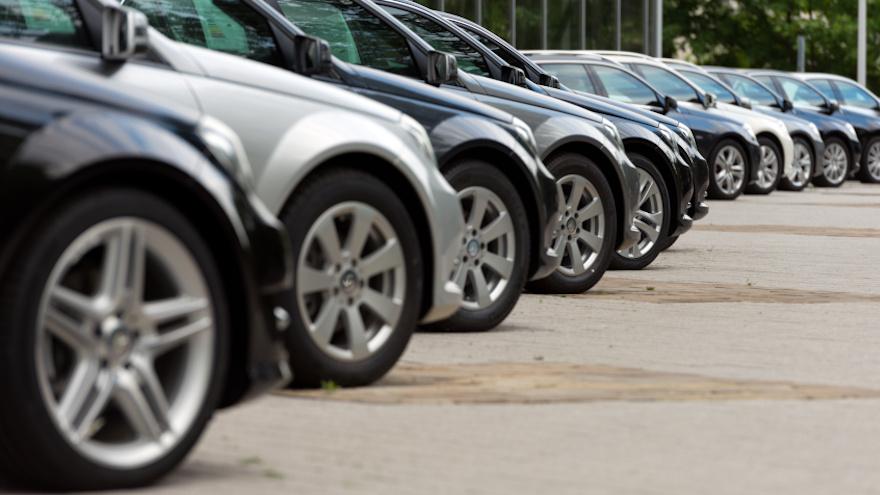AutoIMS examines ‘rollercoaster ride’ in commercial consignment at auction

By subscribing, you agree to receive communications from Auto Remarketing and our partners in accordance with our Privacy Policy. We may share your information with select partners and sponsors who may contact you about their products and services. You may unsubscribe at any time.
CARY, N.C. –
“You don’t normally see quite this big a rollercoaster ride on these lines, but the last two years threw all the rules out the window. So, everyone’s kind of reacting.”
While this quote from Joe Miller could really apply to any aspect of wholesale automotive (or society in general?), the vice president of client experience at AutoIMS was talking specifically about a set of stats that jumped out at him in the latest AutoIMS Industry View report.
It’s a quarterly report the company describes as a “compendium of metrics and insights featured in the AutoIMS Sales Scorecard reflecting the entire U.S. AutoIMS footprint — a vast majority of the commercial sales volumes at wholesale, physical auto auctions in the U.S.”
The slide Miller was speaking about looked at gross sales price as a percent of floor price. Essentially, it helps consignors know what they’re getting for their cars.
That rate for the fourth quarter of 2021 was 100.6%, up from 98.8% in Q4 2020.
But what caught Miller’s eye was the fact that when you look at 2020 and 2021 mapped out, the graphs are a mess of ups-and-downs, peaks and valleys.
Subscribe to Auto Remarketing to stay informed and stay ahead.
By subscribing, you agree to receive communications from Auto Remarketing and our partners in accordance with our Privacy Policy. We may share your information with select partners and sponsors who may contact you about their products and services. You may unsubscribe at any time.
“Normally, gradation on this is not that severe. It’s not like it’s going from 92% to 109%, right. (But) when you put enough cars in the sample, you wouldn’t expect this much variation over time,” Miller said in an interview with Auto Remarketing.
This was just one example of the wild ways of the wholesale market these days, something in which the AutoIMS report takes a deep dive.
Starting with conversion rates, those came in at 68.33% in the fourth quarter, up from 64.36% from the same period of 2020.
Turning to the sales numbers, after peaking in the spring, sales volume spent most of 2021 at a lower level than 2020 numbers, sitting between 20-30% softer throughout Q4.
“Conversion rates remain elevated, although you see that sort of softening coming into November and December. But 68% is still a high number the fourth quarter, especially historically,” Miller said. “The story there is definitely about the volume crunch.”
Especially when considering AutoIMS’ data set, which examines commercial consignment, not dealer cars.
“So, we’re looking at the rentals and fleets and the off-lease, and all that stuff that continues to just be super, super tight,” Miller said. “The dealers are grabbing almost everything they can get before it gets to the auction. We see what’s kind of leftover (and) that makes it to the auction.”
Average sale prices came in at $16,351.47 in Q4, beating the year-ago figure of $13,398.81. The full-year 2021 average was between $15,000 and $16,000.
And while prices were up on a year-over-basis, they showed relative flatness in the last three months of the year, the AutoIMS data shows.
Initial indicators point to lower-end vehicles being “puffed up” and higher-end vehicles pulling the average price up, Miller said. Just a few years ago, the average price might have been $11,000 or $12,000, he said.
“So, this remains super elevated,” Miller said. “Total reflection of supply and demand, and I really think it’s that high-end vehicle that’s kind of pulling the overall average up, at least for our database.”
Elsewhere in the slides, the AutoIMS data shows average vehicle grade slipping from 3.07 in the fourth quarter of 2020 to 2.86 in Q4 2021. Average damage estimates climbed for most of the year, reaching an average of $2,096.34 in Q4. That compares to the Q4 2020 average of $1,747.20
Average mileage climbed from 79,760 a year ago to 90,345 in Q4 2021.
Asked if this trio of trends — lower vehicle grades, higher damage and higher mileage — was a function of prime vehicles being purchased further upstream, Miller said: “I think that’s right. And I also think there’s a couple dynamics that could be at work here. But things like rental cars are going to come back with more mileage and more damage, lower grade … So, there’s definiltey a story there.
“I think we’re going to see the overall U.S. fleet numbers get dinged again, where the average age of the car goes up, the average mileage driven before it gets scrapped and all that. I think that’s definitely at work here.”


